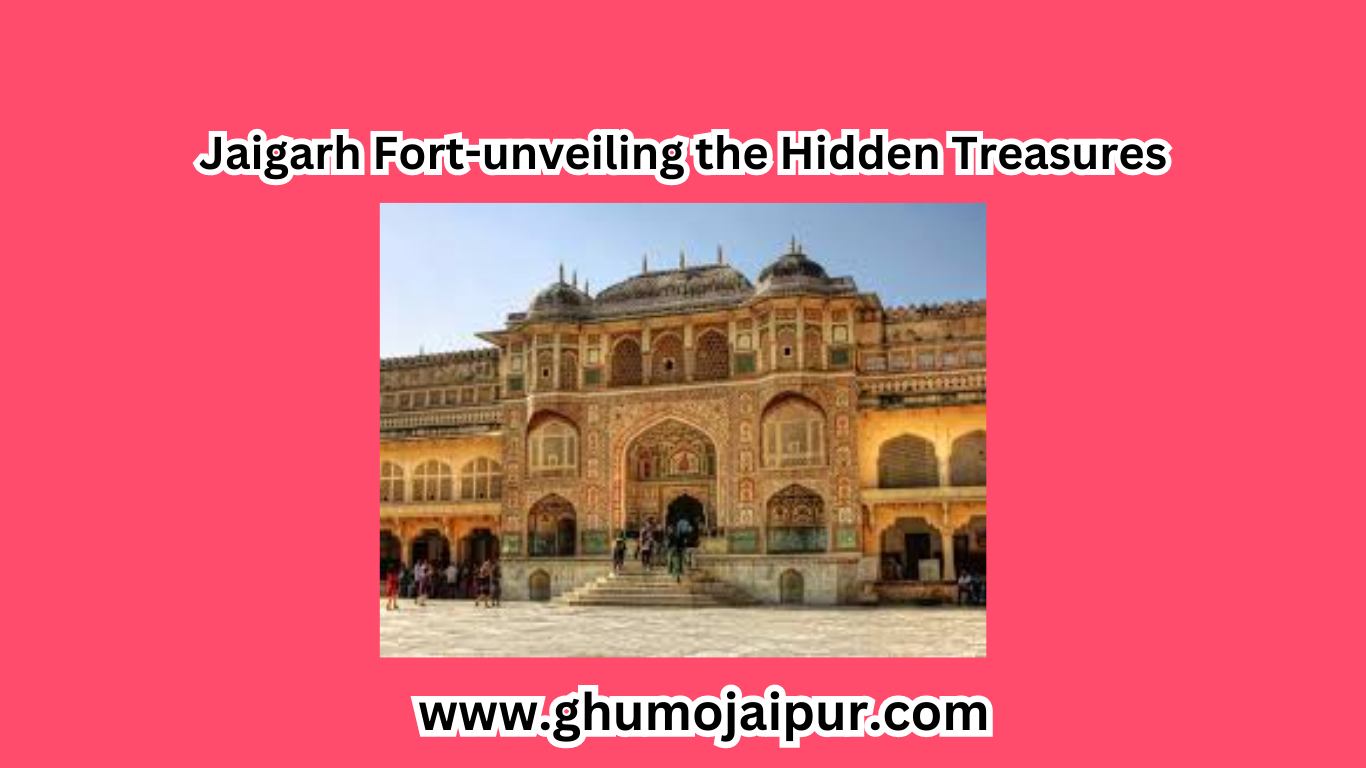Jaigarh Fort is one of most of the most impressive fortresses in India. It’s located in Jaipur, the capital of Rajasthan. The fort was built by Maharaj Jai Singh II in the year 1726 and it’s located on a hilltop called Cheel ka Teela. The fort is home to many hidden treasures that have been discovered over the years, including ancient weapons, manuscripts and other artifacts. In this article, we will explore some of the hidden treasures of Jaigarh Fort and learn about its historical significance.
Jaigarh Fort

One of the most interesting things about Jaigarh Fort is its connection to the Amber Palace. The two structures are connected by an underground passage that was used by the royal family to escape in case of an attack. The passage is over a kilometer long and it’s still intact today. It’s a fascinating experience to walk through the passage and imagine what it must have been like to use it during times of war.
Another interesting feature of Jaigarh Fort is its collection of ancient weapons. The fort was used as a weapons storage facility during the time of the Rajputs and it’s said that the fort’s collection of weapons is one of the largest in the world. The fort’s armory contains a variety of weapons, including swords, guns, and cannons. The most famous weapon in the collection is the Jaivana cannon, which is the largest cannon in the world. It was built in the year 1720 and it’s over 20 feet long. The cannon was never used in battle and it’s said that it was only fired once to test its capabilities.
The fort also has a collection of manuscripts that are of great historical significance. The manuscripts are written in Sanskrit and they contain information about the history of India, including information about the Rajputs and their way of life. The manuscripts are well-preserved and they offer a fascinating glimpse into the past.
Jaigarh Fort is also home to a number of temples. The temples are dedicated to various Hindu deities and they’re a popular destination for pilgrims. The most famous temple in the fort is the Ram Harihar Temple, which is dedicated to Lord Vishnu. The temple was built in the year 10 AD and it’s one of the oldest temples in India.
Another interesting feature of Ja.igarh Fort is its water harvesting system. The fort has a number of large tanks that were used to collect rainwater. The tanks were built in such a way that they could collect rainwater during the monsoon.
Another noteworthy feature of Jaigarh Fort is its impressive armory. The fort was renowned for housing one of the largest and best-preserved collections of medieval cannons in the world. The fort’s armory included a range of cannons, including the famous Jaivana Cannon, which is considered to be the world’s largest wheeled cannon.
The water harvesting system of Jaigarh Fort is a remarkable feat of engineering. In addition to the large tanks used for rainwater collection, the fort also has an extensive network of underground channels and reservoirs. These structures were designed to efficiently store and distribute water throughout the fort, ensuring a reliable water supply during both wet and dry seasons.
The tanks at Jaigarh Fort were strategically placed to capture rainwater during the monsoon season. The slopes of the surrounding hills were utilized to channel rainwater towards the fort, where it would accumulate in the tanks. The tanks were built with large storage capacities, allowing them to hold a substantial amount of water for the fort’s needs.
The underground channels and reservoirs played a vital role in preserving the collected water. These structures were designed to prevent evaporation and seepage, ensuring that the stored water remained available for an extended period. The water from the tanks would flow through the channels, which were constructed with precision to maintain a steady supply to different areas of the fort, including the temples, residential quarters, and other facilities.
The water harvesting system at Jaigarh Fort not only catered to the daily needs of the fort’s occupants but also served as a crucial resource during times of siege or prolonged battles. It provided the fort with a sustainable water source, reducing dependence on external supplies and strengthening its defensive capabilities.
Today, visitors to Jaigarh Fort can witness the remnants of this impressive water harvesting system. The tanks, channels, and reservoirs stand as a testament to the ingenuity of the engineers and architects of ancient India. It serves as a reminder of the importance placed on efficient water management in historical structures and provides insights into the technological advancements of that era.
Read More – click here

